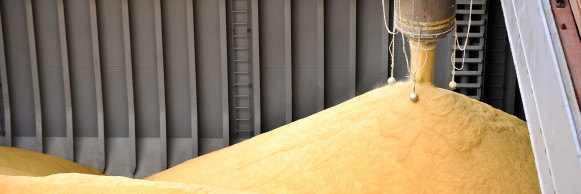
It must be tough to find a seat on flights between Brazil and Beijing these days.One Chinese delegation after another has visited Brazilian soybean-producing states to cut deals,and farmers from the largest of those states,Mato Grosso,went over earlier this year to woo their biggest customers.
But the U.S.transportation system gives U.S.soybean farmers'an advantage over Brazil,and it's important for farmers to pay attention to the state of their railroads,highways and locks and dams to ensure this advantage endures.Otherwise,the U.S.soy sector could become less competitive against the growing relationship between China and Brazil.
Last month,Brazilian Vice President Michel Temer was in Canton,China,where he signed a 10-year bilateral agreement in which the two countries elevated their trading relationship to the level of"global strategic partners."Yet it was much more than just a"kumbaya"moment.China is now Brazil's leading trade partner,and the two countries had done$19.54 billion worth of trade from January to March of 2013.A great deal of that trade was soybeans.
China was the destination for 61 percent of all soybean exports from Mato Grosso,Brazil's top soy-producing state.It's estimated that 90 percent of all soybeans and products from another soybean-producing state,Mato Grosso do Sul,also end up in Asia.During the first three-quarters of the year,China spent$16.8 billion on Brazilian soy,and soy complex exports made up 15.5 percent of total Brazilian exports during that period.
Earlier this month,the Chinese made big news when they announced plans to buy as many as 10 million metric tons(MMT)per year of Brazilian corn.In their meeting with Vice President Temer,the Chinese clearly stated their intentions to also buy more soy from Brazil in 2013-14,according to Brazilian business publication Portos E Navios.
"The promise that(the Chinese)will buy more soybeans from Brazil…was repeated two times,"Temer told the publication.
The U.S.Department of Agriculture says Brazil will produce 88 million metric tons of soybeans in 2013/14.Brazil's Conab agency,which keeps track of agriculture production,says it'll be more like 90.2 MMT.And there's little doubt that most of whatever the final number turns out to be will be headed to China.After all,the Brazilians are going all out to increase soy exports to their No.1 trade partner.
It wasn't just Vice President Temer in China last month.Kátia Abreu–the head of Brazil's National Confederation of Agriculture,which late last year opened a representative office in Beijing–was on a plane to Shanghai with the heads of several state ag groups to kick off AgroInvest Brasil,a series of presentations on Brazilian agriculture to Chinese buyers.
Now let's go from China to the far-away farms of Brazil.Right now,some Mato Grosso farmers are already lining up trucks to haul their harvest away—mostly,of course,to China.Their beans become a lot more expensive by the time they make it over appalling roads to the port.This is where U.S.soy has an advantage,but this competitive edge is at risk.Last month,the Brazilian administration announced it would drop billions of dollars into an initiative to improve its waterways.
Because of this investment,it's becoming even more important for U.S.soybean farmers to continue to educate the public about the need to maintain the U.S.transportation system.
Yep,the friendly skies to China are pretty packed these days with those who want to sell soybeans,whether they're from North America or South America.And Brazil's making a big push to get that bigger piece of the pie China says it wants to give them.





